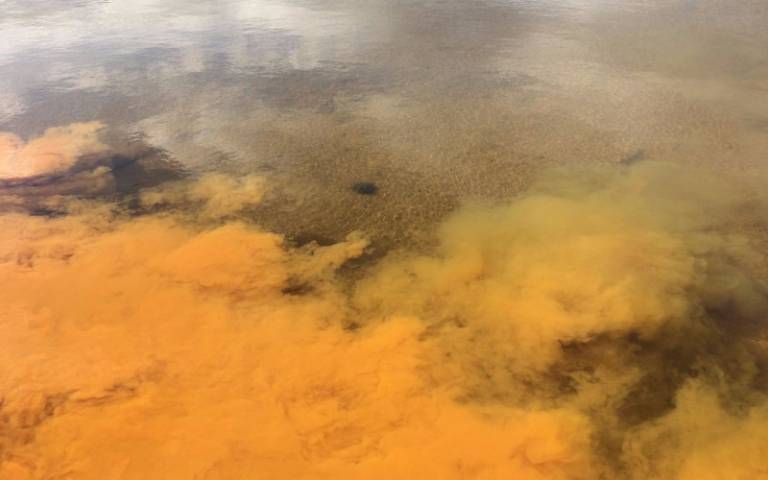Creating colours from coalfields
The discovery of five new paint colours in ex-coal mines has been developed by a UCL Slade School artist. It has led to the first-ever use of paint derived from UK coal mine water treatment.

The discovery was made by visual artist Onya McCausland during her PhD research when she visited mine sites across former British coalfield locations in Scotland, Lancashire, Yorkshire and South Wales.
The Coal Authority has 75 mine water treatment schemes preventing 4,000 tonnes of iron solids from polluting local water. Once treated, the clean water enters local watercourses and leaves behind iron solids that would stain riverbeds orange if left untreated. This is the ochre (or ferric oxy-hydroxide) by-product.
Onya travelled around the country collecting samples of ochre to take back to the laboratory where it was milled, burnt and examined under electron microscopes to fully develop the potential of each colour. When painting with them in her studio, Onya also found striking differences between the colours depending on their geographic location.
Thanks to Onya’s research, Cuthill in West Lothian, Scotland; Deerplay in Bacup, Lancashire; Saltburn in East Yorkshire and Six Bells and Tan-y-Garn in South Wales, will become the first-ever functioning industrial sites to become public works of art.
Working in collaboration with paint manufacturers Michael Harding and Ty-Mawr, Onya is working toward bringing these culturally significant new colours from the old mines into the public realm for the first time as usable artworks.
Onya said:
“These pigments have come into existence due to human activity and highlight the intricate relationship between humans and the exploitation of the local landscape. The mine water treatment schemes are the really important link between the colour, the material, and the place.
Jon Aumônier, Innovation Project Manager (Coal Authority) said:
“This is a very exciting 'first' for the Coal Authority. Seeing our ochre turned into pigments that are 100 per cent natural and highly desirable within the artistic world is fantastic.
The project has been funded and supported by a UCL Knowledge Exchange and Innovation award from UCL Innovation & Enterprise. The project is also supported by Dr Steven Schooling UCLB and the UCL Culture and the Material Research Project – co-led by Jo Volley, Deputy Director (Projects) at the UCL Slade School of Fine Art.
Meet the minds behind this discovery at the It's All Academic Festival on 5 October.
Links
 Close
Close

